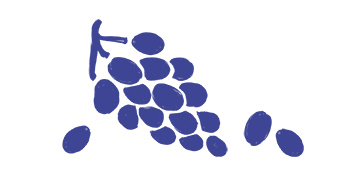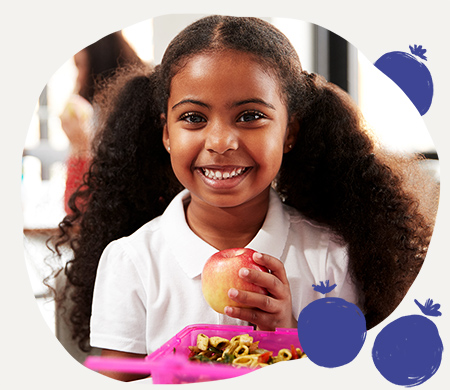
We study how the food industry shapes our food choices.
One major way they do this is through food marketing. Food marketing to youth is pervasive, and the foods most heavily marketed towards children tend to be unhealthy. We have conducted research to document the scope of unhealthy food marketing and to understand how popular marketing strategies like the use of cartoon characters on food packaging influence kids.

Food Marketing to Children
Does the use of popular characters like Dora the Explorer on food packaging influence kids?
Our research suggests that popular cartoon characters can powerfully influence children’s preferences and choices.
Methods
We conducted a school-based study with 4-to-6 year old children. We presented them with snacks (graham crackers, fruit snacks, and carrots)—one had a licensed cartoon character on the package, and the other did not. We then asked them to take a bit of each snack and point to the one that tasted better or indicate that they tasted the same. We then asked them to choose one of the items for their snack.
Results
Our research revealed that children think a snack with a popular character tastes better than the same snack without a character. Children also overwhelmingly choose a snack with a character on it compared to the same snack without the character. We have also replicated this study in Guatemala.
Implications
Governments can implement more stringent guidelines on how these characters can be used to market unhealthy foods to children. Chile, for example, has a policy that does not permit unhealthy foods to display spokescharacters like Tony the Tiger on their packaging.
Are low-income individuals targeted with food marketing?
Many food purchasing and weight status disparities exist between Supplemental Nutrition Assistance Program (SNAP) participants and non-participants. SNAP benefits are often administered on the same day/week of the month, so retailers who accept SNAP may be incentivized to increase unhealthy food and beverage marketing during this time to capitalize on this.
Our study, led by Dr. Alyssa Moran and in partnership with the New York State Department of Health, investigated whether beverage marketing increased on days SNAP benefits were distributed compared to other days of the month. We also analyzed if there were increases in marketing among high SNAP enrollment versus low SNAP enrollment neighborhoods.

Methods
Research assistants performed beverage environment scans in SNAP-authorized retailers in three cities in New York, recording the presence or absence of beverage displays, advertisements, and price promotions.
Results
In high SNAP enrollment neighborhoods, retailers were more likely to use displays and advertisements to promote sugary drinks during days SNAP benefits were issued compared to other days of the month. This suggests low-income consumers are being targeted with sugary drink marketing
Implications
At the state level, SNAP benefits could be issued over an increased number of days. State policies could regulate point-of-sale marketing and require health warnings on beverages to reduce the effects of unhealthy food marketing.
The U.S. Department of Agriculture could introduce stricter regulations by prohibiting SNAP-authorized retailers from placing nutritionally poor items in highly visible locations
Can the food industry improve practices on their own?
Under recent scrutiny, the food industry has made efforts to self-regulate and improve their food choices to promote consumer health. We conducted a study of the restaurant industry’s Kids LiveWell program that encouraged restaurants to offer healthier kids’ menu items. Our analysis found that the program was not associated with improvements in the healthfulness of choices available on restaurant menus, suggesting policies or greater incentives are needed to encourage healthier industry practices.
